

Ben Zachariah
CarExpert's top five ute reviews of 2025
2 Days Ago
The Ranger Sport V6 sits between the XLT and Wildtrak. It's well-suited to demonstrating the strides Ford has made with the new-gen model.



Quickly see how this car stacks up against its competition. Select any benchmark to see more details.
Where expert car reviews meet expert car buying – CarExpert gives you trusted advice, personalised service and real savings on your next new car.
The hyped new Ford Ranger is finally on sale, and the biggest news is the addition of a V6 diesel engine with more power and torque than price-point competitors.
The version we’re looking at here is the Ranger Sport grade, which sits a rung above the big-volume XLT and below the flagship (Raptor excluded) Wildtrak in the wider Ranger line-up. We have a Wildtrak through the CarExpert garage this week to review and film, so stay tuned.
The new-generation Ford Ranger is arguably the most important vehicle launch for Australia in 2022. The Ranger is Australia’s second top-selling vehicle, after its Toyota HiLux rival, and was designed and engineered for the globe right here in Melbourne and regional Victoria.
MORE: 2023 Ford Ranger review
The Ranger Sport is only available as a dual-cab 4×4 pickup – just like the Wildtrak, but unlike the bread-and-butter XLT which also comes in extended-cab, 4×2 and cab-chassis forms.
Ranger Sport models fitted with the base Bi-Turbo four-cylinder diesel cost $63,690 before on-road costs, while the V6 adds a further $3000 to cost $66,690 before on-roads. For some context, an equivalent XLT is $2500 cheaper while an equivalent Wildtrak is $3500 more.


Ranger Sport pricing
Prices are RRP, excluding on-road costs such as stamp duty and dealer delivery – the latter of which has been a controversial issue, with some Ford dealers gouging customers by hiking this fee.
For some context, a Toyota HiLux SR5 costs $60,680 and an Isuzu D-Max LS-U+ costs $63,500, making the Ranger more expensive than its closest competitors.
Then again, Ford has sold nearly 20,000 Rangers already, so it’s not exactly struggling with demand…
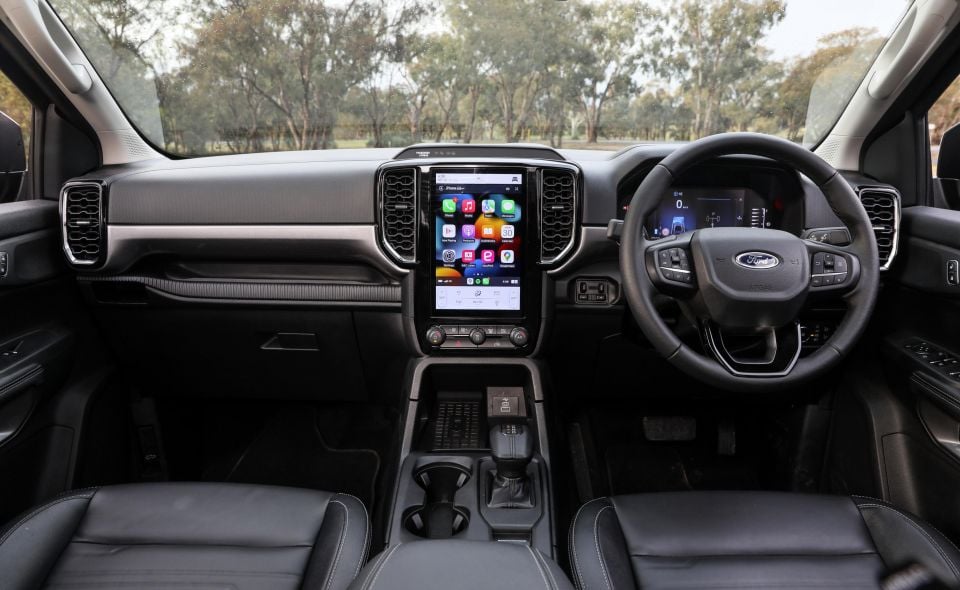
Buy your new car without the stress. It's fast, simple and completely free.

Great service from Travis and team, second time I have used this business would not hesitate to recommend them to anyone
Craig C.
Purchased a Ford Ranger in Sunshine Coast, QLD
CarExpert helped Craig save thousands on his Ford Ranger, now let us save you on your next new car.
Find a dealThe interior looks and feels more modern and the redesigned steering wheel offers telescopic adjustment unlike the old Ranger, which improves the ergonomic setup right off the bat.
I had no complaints about the leather seats with embossing, though they lack the degree of shoulder bolstering you find in the Isuzu D-Max or Mazda BT-50 twins, and the seatbelt height is fixed. Only the driver’s side is power-adjustable at this spec level.
For what it’s worth, Ford also throws in front mats with the Sport and Wildtrak.
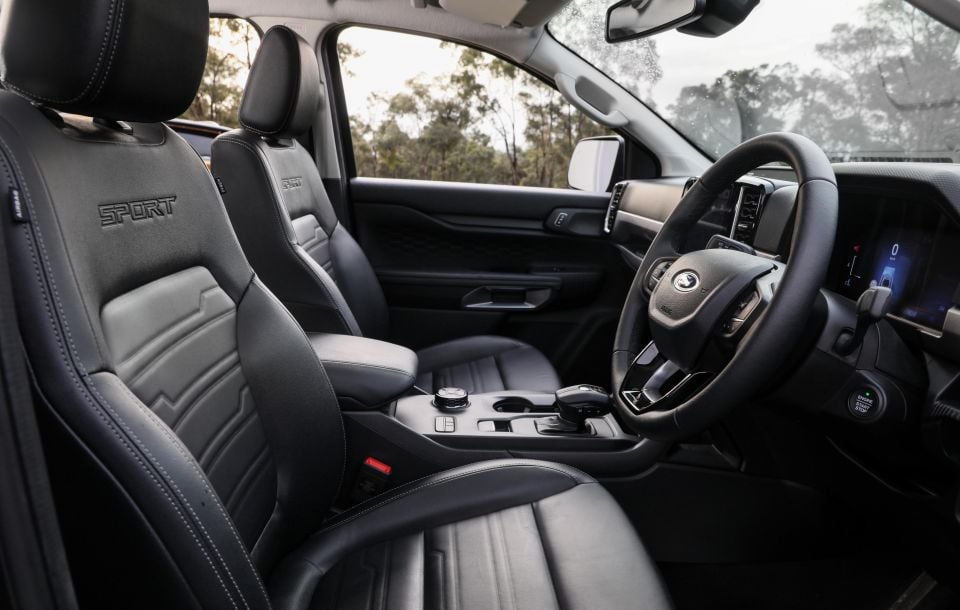
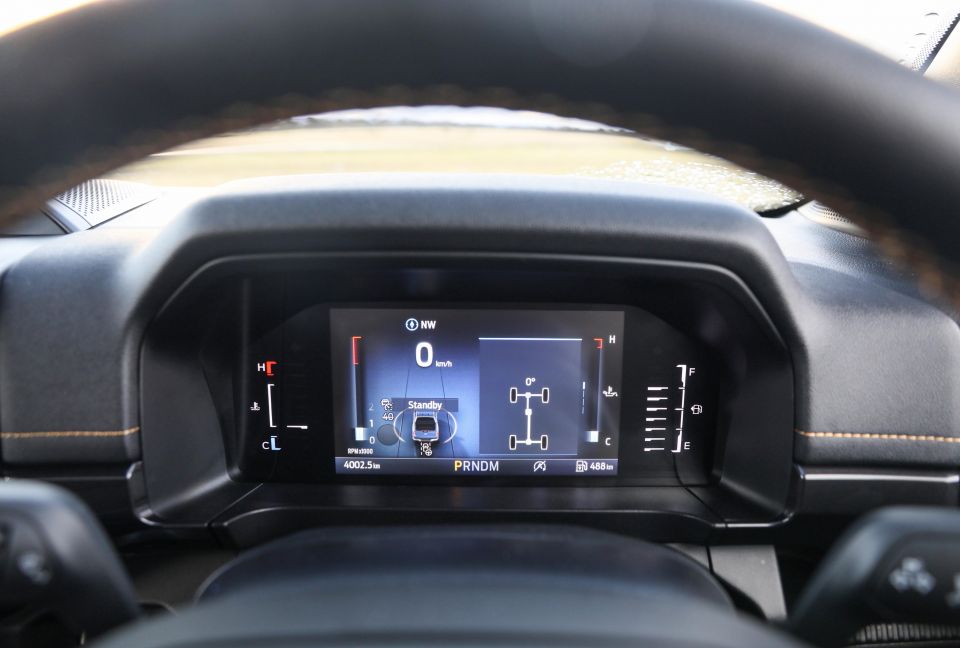
Behind the new-look wheel sits the 8.0-inch digital cluster with plenty of information: speed, trip data, driver-assist settings, off-road pitch and roll angles, and real-time driveline animations. The tachometer isn’t the final word in legibility, however.
A small but welcome touch is the slick animated start sequence upon entry, which is not the kind of flashiness you’re expecting from a workhorse.
The 10.1-inch portrait-oriented (like a phone) LCD touchscreen runs Ford’s Sync 4 infotainment software, has an embedded modem for app-based connectivity and over-the-air updates, and wireless Apple CarPlay and Android Auto with near full-screen sizing.
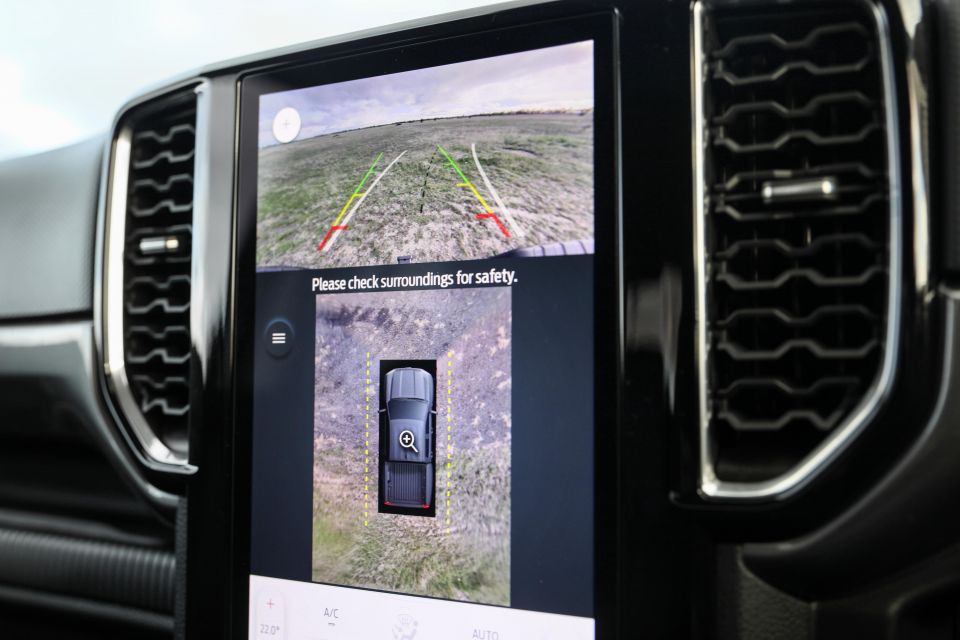
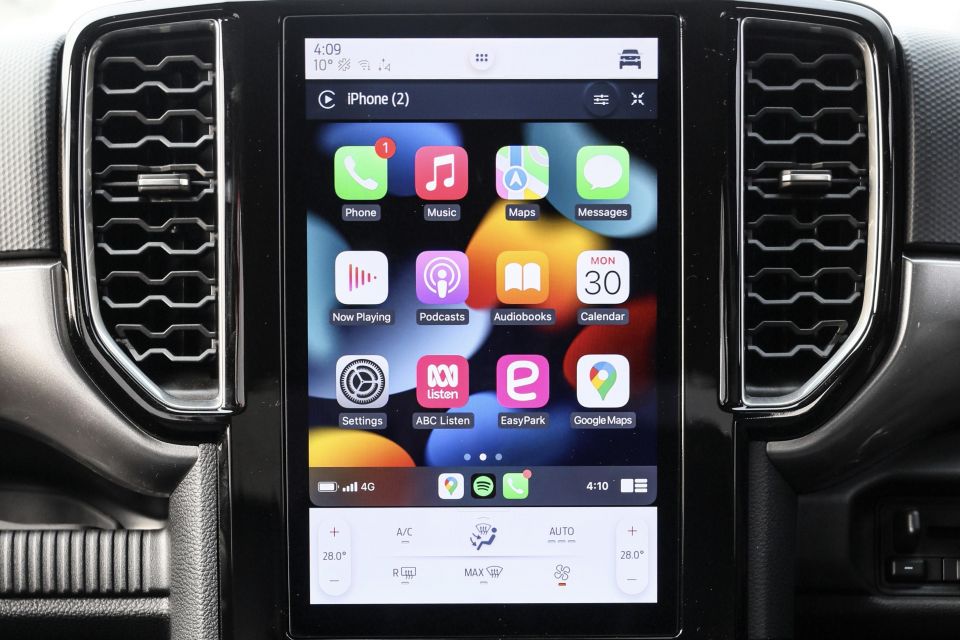
There’s an embedded satellite-navigation with real-time traffic alerts and impressively detailed urban displays, a voice-controlled assistant, and a digital radio (DAB) receiver.
While only Wildtraks get a 360-degree camera view with handy front-view display for cresting steep hills, it can be optioned in both XLT and Sport grades and comes highly recommended.
There’s also a USB outlet mounted next to the rear-view mirror for easy dash cam fitment.
One aspect of the tech suite that probably won’t get enough attention is the FordPass app integration, which lets you control various car functions and get important vehicle information through your phone.
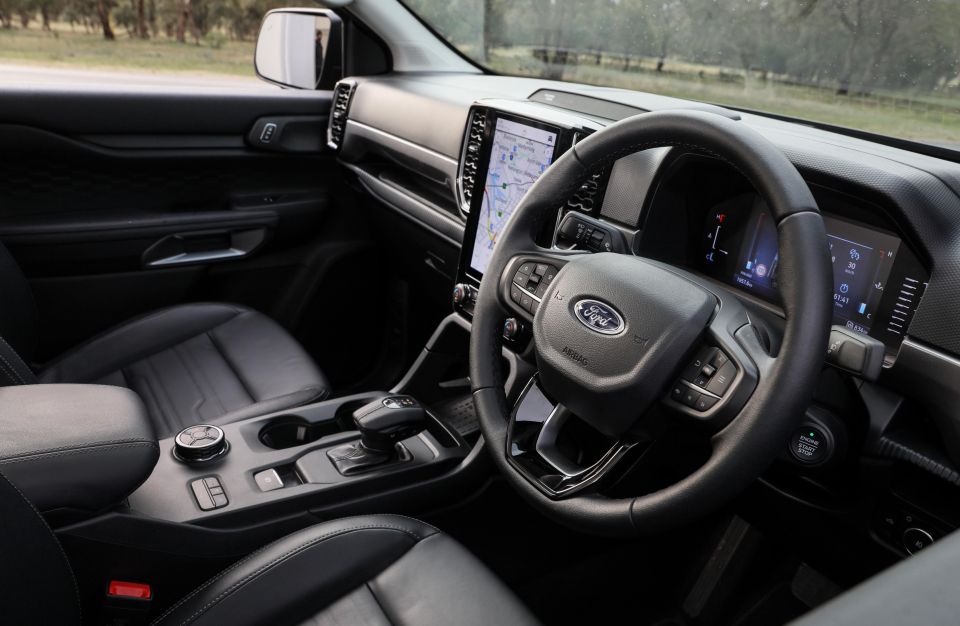
The process to pair my iPhone FordPass app to a Ranger took about five minutes, and access to the car’s VIN.
It can be used to lock/unlock and remotely start the vehicle; check fuel levels, tyre pressures and oil life; find the car on a map; check the live odometer; and remotely turn on the exterior projecting zone lighting. You can also access 24/7 roadside assist and dealer information through the app.
There’s also a Trailer Light Check feature: hook up your trailer, stand behind, press a button, and it’ll run through the light sequence (indicators, brakes, reverse lights), so you no longer need a mate or a reflective shed to ensure your trailer’s signals are functioning as they should.
That is a very thoughtful touch, although we’d note you need to pay extra for the integrated trailer brake controller (part of the $900 Touring Pack which also adds the 360-degree camera, exterior projecting zone lighting, and puddle lamps).
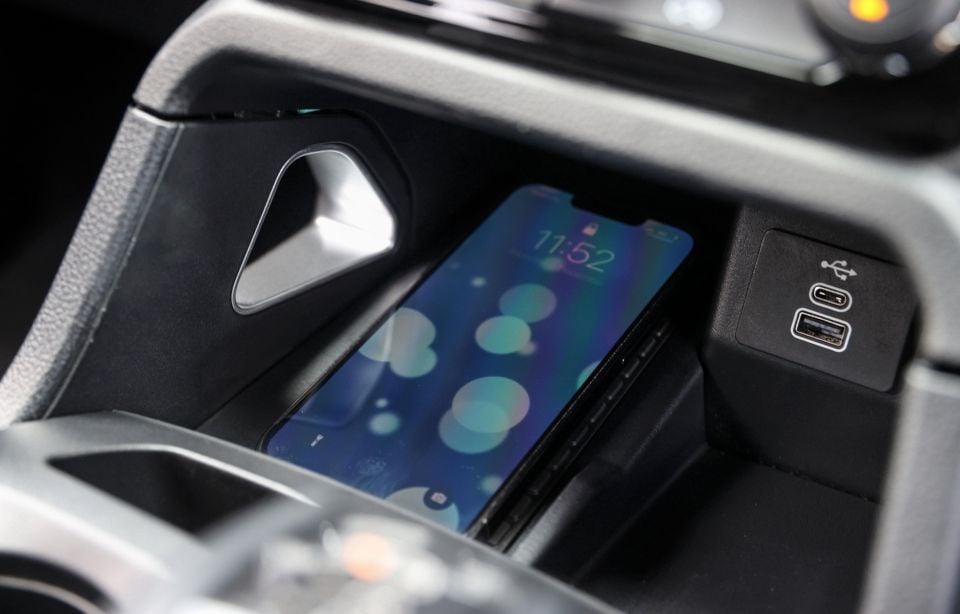
While many functions are in the touchscreen menus, we’re glad Ford chose to retain buttons for ventilation controls (temperature, fan speed and recirculation) as well as audio volume, because quite frankly the old ways are sometimes the best ways, especially with dirty hands.
Underneath the centre dash lies a phone-sized open cubby with an optional wireless charger standard at this spec level.
There are several different transmission tunnel designs, interestingly enough.
All V6 models come with an ‘e-shifter’, a space-saving gear shifter which Ford says it had to fight hard to fit, since Dearborn head office wanted to cut costs and make it fit a rotary dial shifter a-la the Escape SUV.
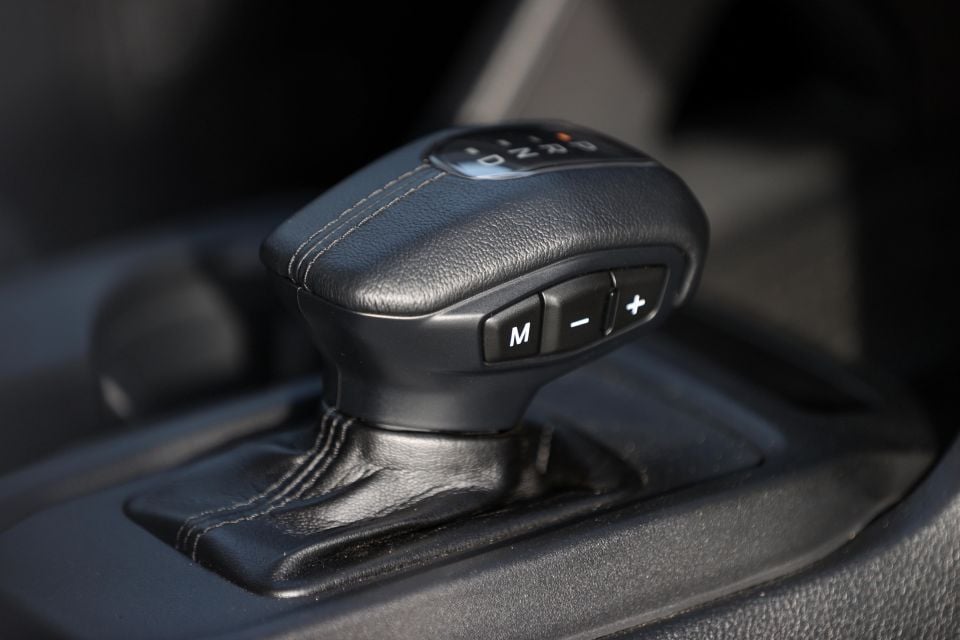
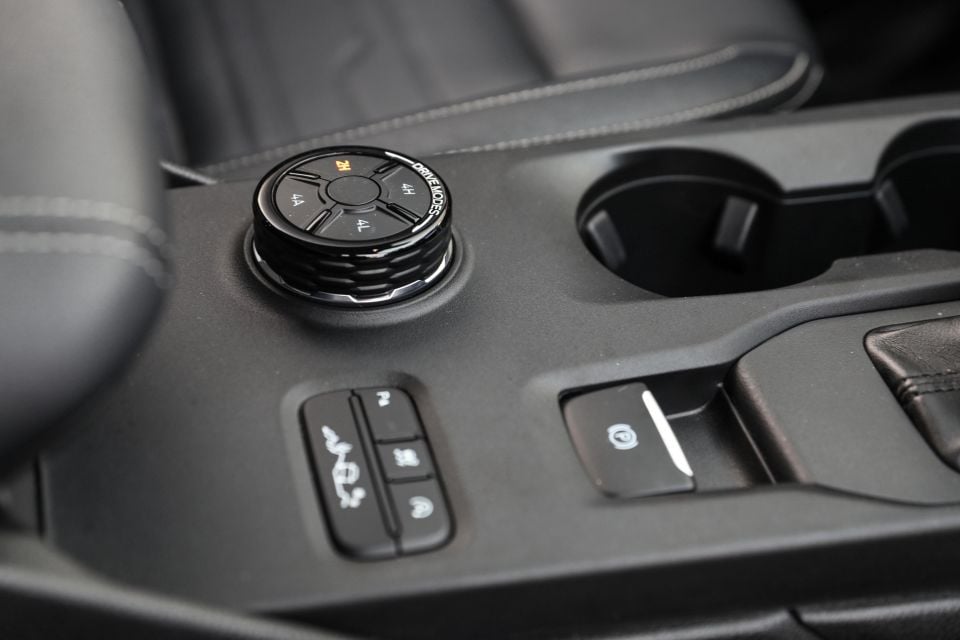
The Ranger Sport also has an electric park brake switch which frees up space for more convenient cupholders, behind which sits a rotary shifter to operate the different 4×4 setups and drive/traction modes.
Storage options include a relatively capacious cupholder and glovebox, plus bigger door bins for bottles and folders and a phone-friendly open section ahead of the front passenger.
Oddly enough, only the Wildtrak adds a second higher-mounted glovebox and retractable cup holders along the dash. Do prospective Ranger XLT and Sport owners not have lots of things, too?
In terms of build quality and fit-and-finish, the balance of nice padded and stitched materials with easier-to-clean hard plastic surfaces felt about right.
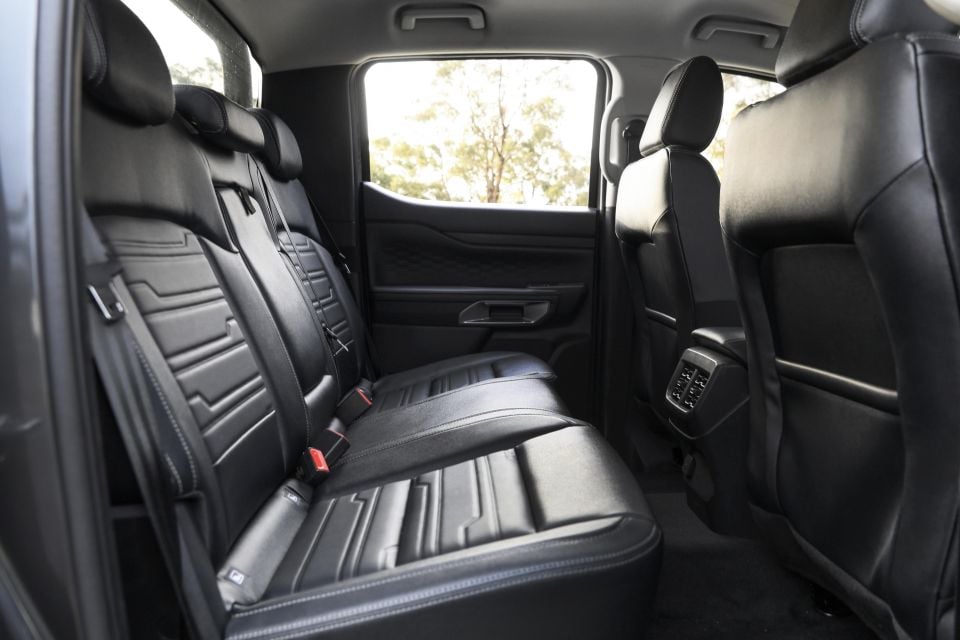
The interior door handles are also completely unique to the segment, and seem easier to reach and operate – being located in the armrests rather than along the door.
The back seats where relevant don’t feel any more capacious from the seat of the pants despite the slightly longer wheelbase, which means my 194cm frame had tight knee room behind my preferred driving position, but good head- and shoulder room.
The rear seat-back folds down, and there are requisite ISOFIX and top-tether child-seat points.
Rear occupants get air vents and a 12V socket – ready for a USB adapter I’d reckon – plus spring-loaded pull-out roof handles (take note, Toyota), a flip-down centre armrest, and pull-up grab handles on each b-pillar.
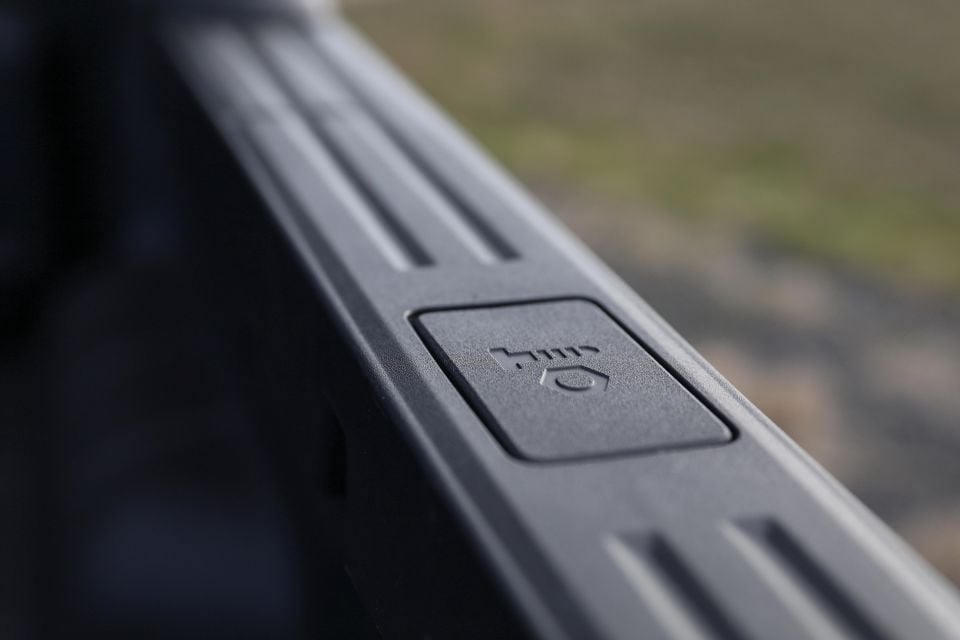


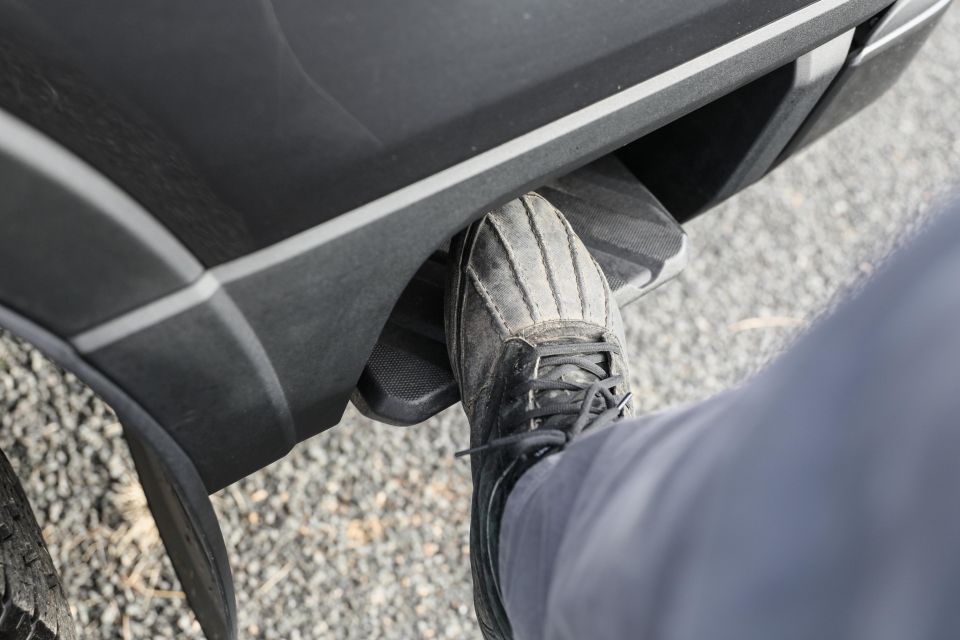
Meanwhile you can flip up the bench seat base to access small-but-handy storage bins hidden away. Ford also moved the upper seatbelt points so they rub your neck less.
The top-selling dual-cab models have a slightly wider tub than before, and is billed as sufficient to flat-stow a 1200mm x 800mm pallet.
It’s also much simpler to access, with clever and sturdy ‘box steps’ fitted just behind the tyres. I’m 105kg, jumped on them, and they felt stable.
The counterbalanced tailgate (with mounting points for vices and even a pre-drawn ruler) can be lifted with a finger, there are six tie-down hoops in the bed, and the box sides have structural attachment points for canopies pre-fitted.
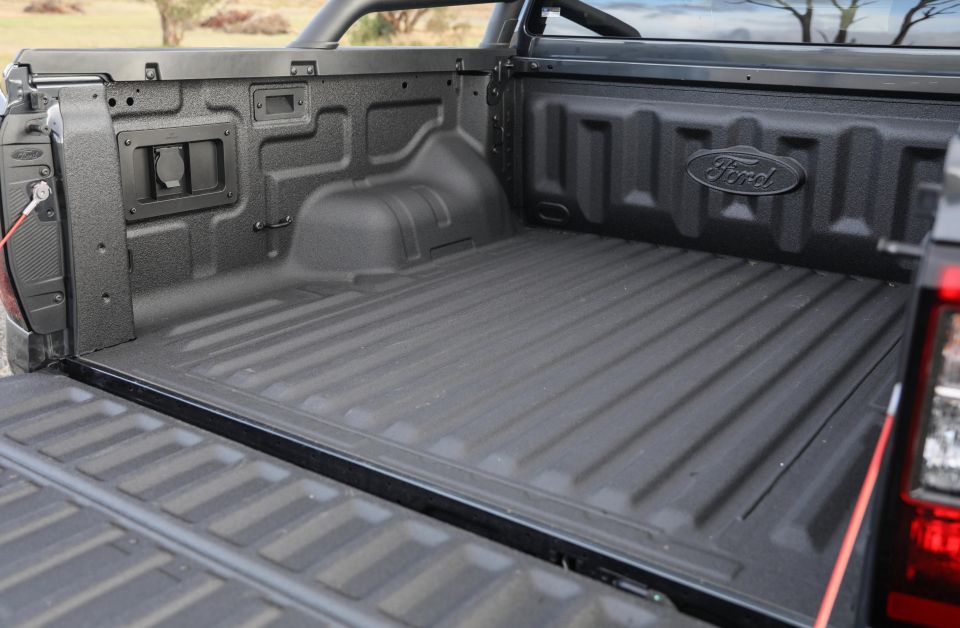
Too bad there’s only a 12V rather than 240V three-prong socket in the rear – design rules do not allow a universal plug point, which Rangers offer overseas. (Note: Story previously cited ADRs specifically as the reason, but we’re following up to understand this better).
If you want the Rolls-Royce cargo area, then you need step up to the Wildtrak. It has a powered roller shutter tonneau that operates from your key fob, a bed liner, and moveable tie-down points along the upper-sides. Those silver bars are quite strong rather than merely decorative.
A spray-in bedliner costs $400 in the XLT and Sport and replaces the standard drop-in plastic setup.

The new Ranger’s 2.0-litre Bi-Turbo (sequential, with bypass function) engine had some tweaks for application in this new model, but it’s pretty familiar to anyone who drove the previous version.
The big news is the new V6 which we’ve driven here, making 184kW at 3250rpm and 600Nm from 1750rpm, mated to the same 10-speed automatic transmission as the Bi-Turbo, and matching its 3500kg braked-trailer towing capacity – while promising to lug loads more easily.
When you consider the HiLux’s 2.8-litre four-cylinder makes 150kW and 500Nm, and the D-Max’s 3.0-litre four makes 140kW and 450Nm, it’s clear this Ranger has plenty of oomph even by class standards.
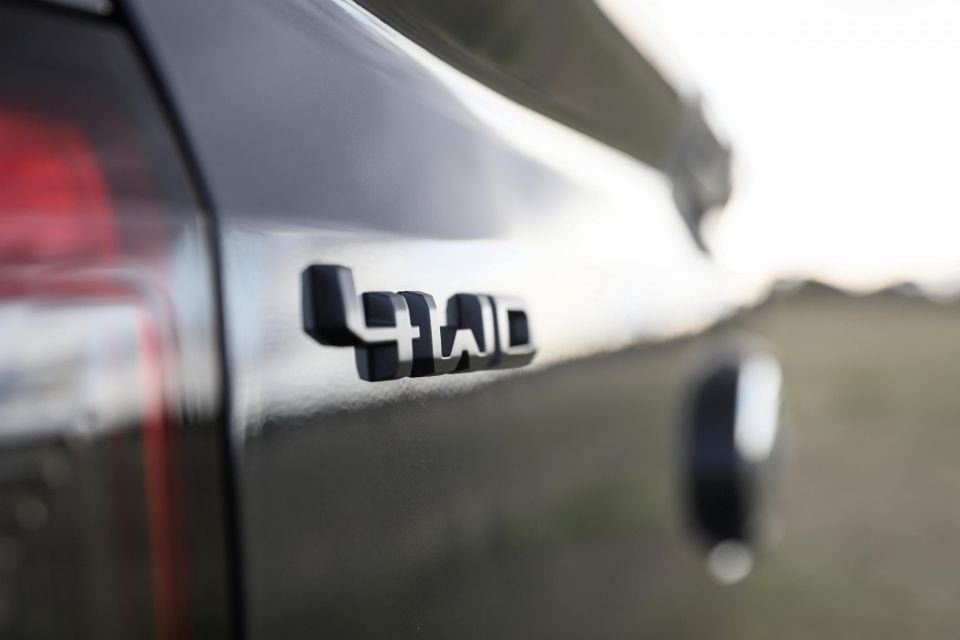
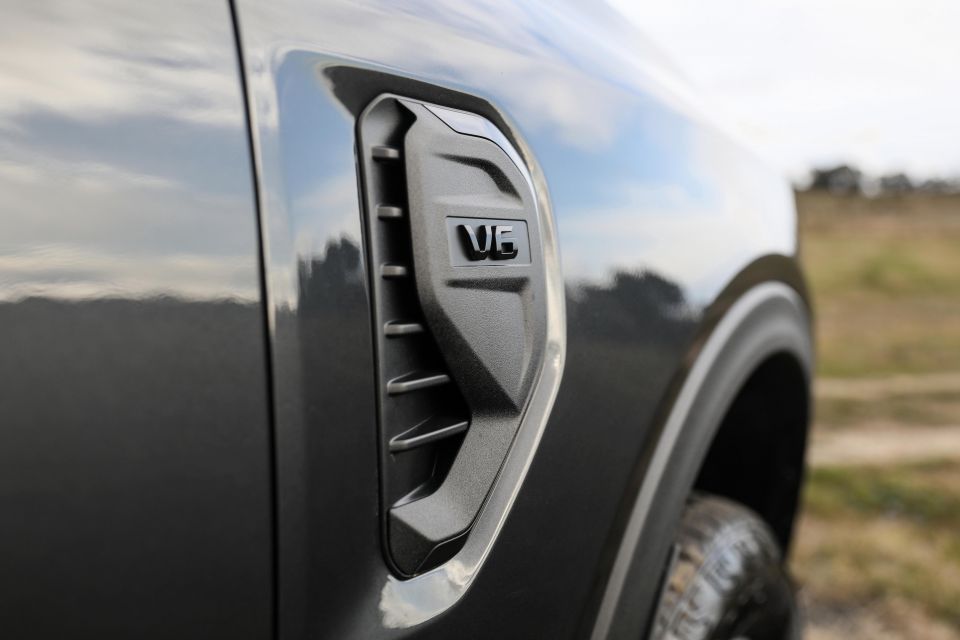
This engine derives from that once used in the now-axed US-market Ford F-150 diesel, but naturally the smaller Ranger presented packaging challenges. Ford Australia also changed out the oil pan, made it ready for greater tilt angles, changed out the turbo and intakes, and tested it all over again.
The V6 models also have a full-time 4WD mode suitable for road use – while retaining traditional 2H (rear-drive), 4H (high) and 4L (low) modes as well – unlike the four-cylinder which retains part-time 4×4.
In terms of fuel consumption, the V6’s ADR claim on the combined cycle is 8.4 litres per 100km, compared to 7.6L/100km for the four-cylinder. The V6 comes with stop/start, but does not require AdBlue for the Australian market.
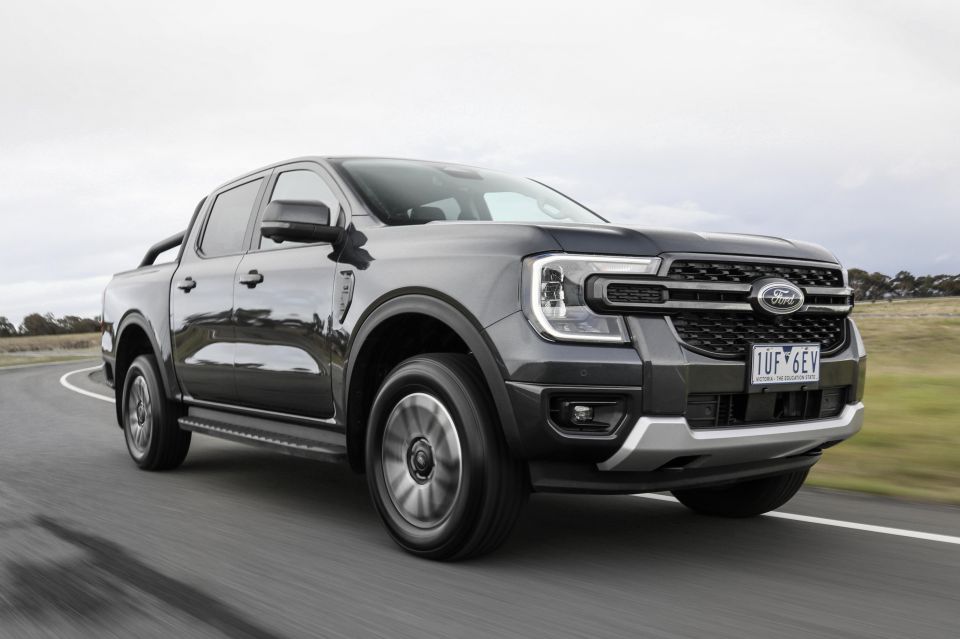
Where expert car reviews meet expert car buying – CarExpert gives you trusted advice, personalised service and real savings on your next new car.
The Ranger’s Aussie DNA remains evident once you break out of the city limits and find yourself loping along ungraded gravel and coarse tarmac.
It rides over corrugations with a minimum of fuss, offering plenty of softness in the suspension, matched with good amounts of control on rebound – even when there’s nothing heavy in the tub.
Ford fitted a new electric power steering system and while it’s as light and single-finger-friendly as before, there seems to be a little more directness and consistency to it this time, making the drive a little more engaging.
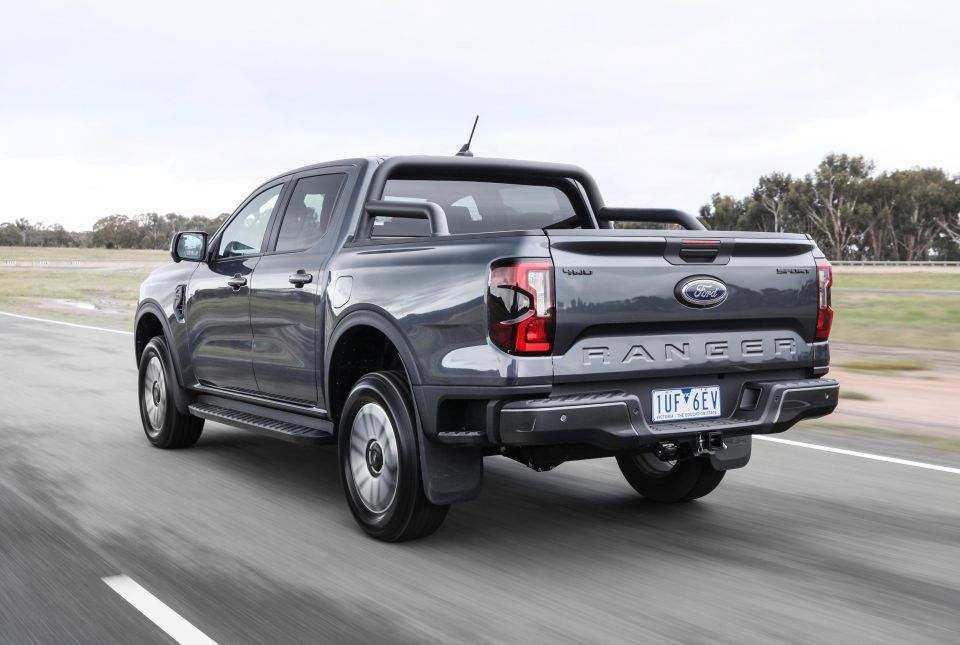
It’s also quiet in terms of the degree to which tyre roar, wind noise, and engine gruffness are filtered out of the cabin at a cruise.
While the core ladder frame and coil front/leaf rear suspension setups are familiar, Ford Australia’s engineers added 50mm in track width and moved the dampers outboard, theoretically tamping down ever further on hopping and bouncing when lightly laden.
It’s also worth noting Rangers graded XLT, Sport and Wildtrak now have rear disc brakes rather than drums.
Ford’s Australia-led worldwide development program comprised a claimed 4 million kilometres of real-world and sim validation, at temperatures of -50 to 50 degrees celsius, up to 5000m of altitude, across 10 countries. Want to know more? See below.
MORE: 2022 Ford Ranger, Raptor and Everest preview: Development drive
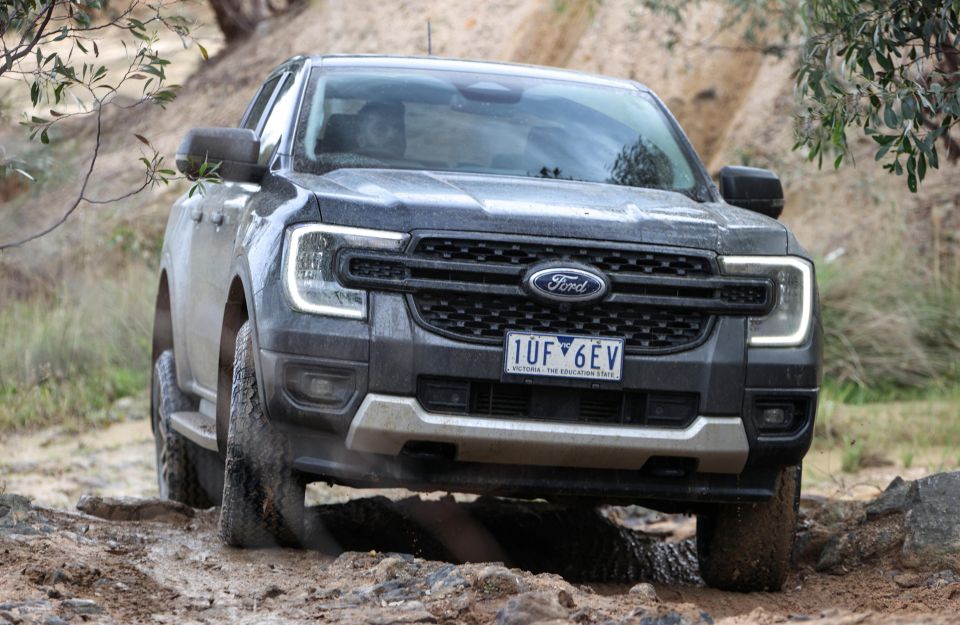
The headline V6 offers better punch than the $3000 cheaper four – 30kW and 100Nm to be precise – as you would expect, as well as idle stop/start and permanent 4WD. It’s also quite refined from outside, with a fairly muted diesel idle.
Overall it offers more immediate punch off the mark as well as better traction in the right setup, and a superior surge of torque from 1750rpm upwards for easier overtaking. It isn’t hard to see the appeal, and it certainly puts a D-Max or HiLux in the shade for both refinement and performance.
Note: The V6 models are listed as 58kg heavier than the Bi-Turbo fours, but they also gain an additional 50kg of Gross Combined Mass, so payload differences are negligible.
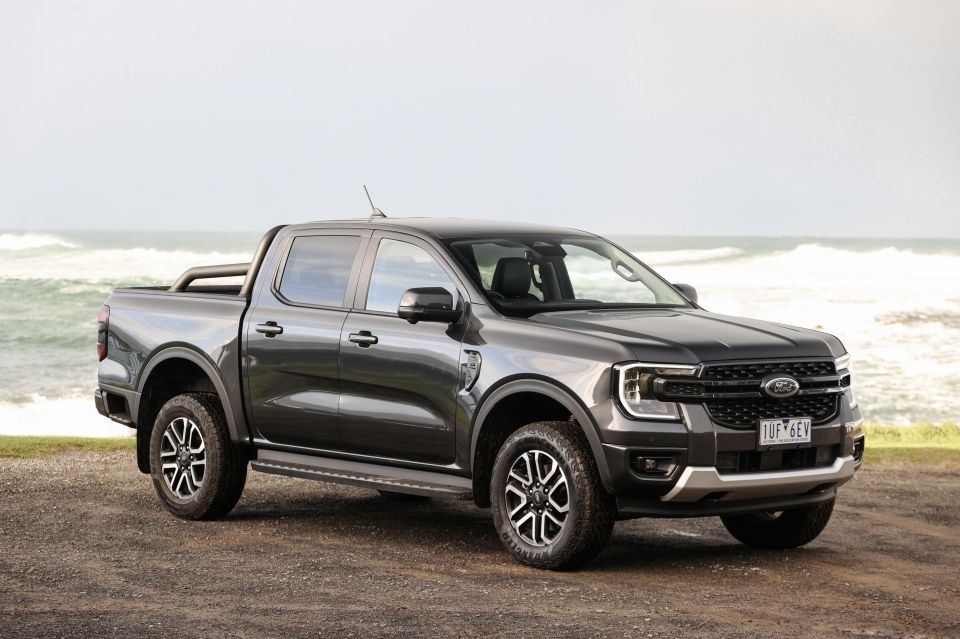
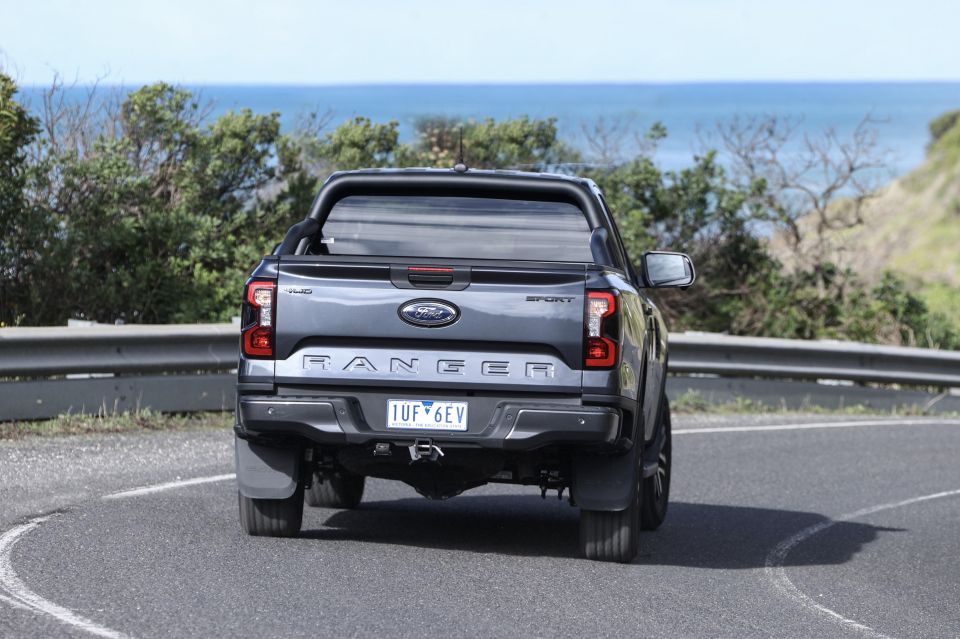
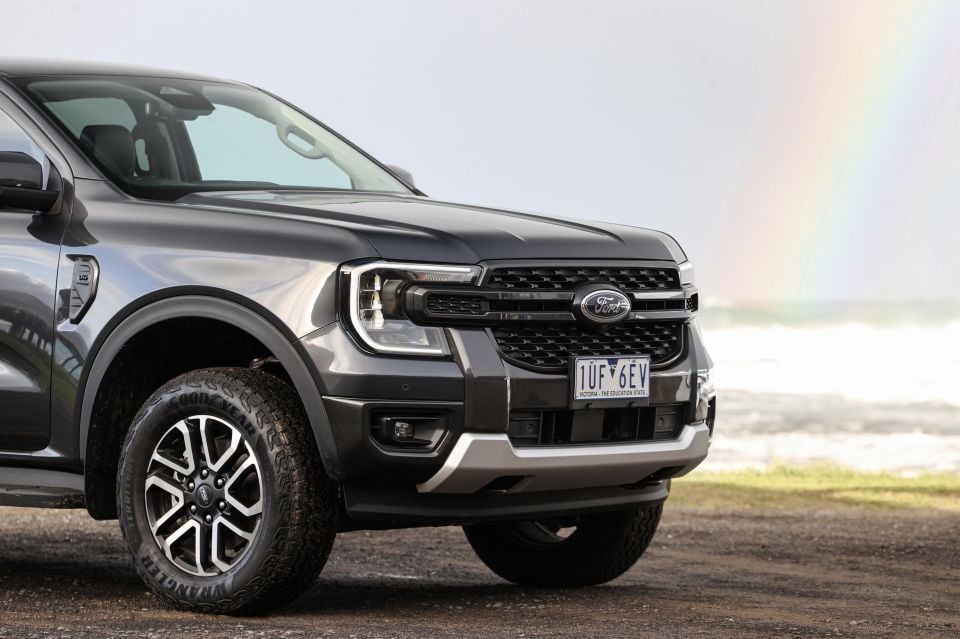
The difference in fuel use between the four-cylinder (7.6L/100km) and V6 (8.4L/100km) is actually quite small. While this review is based on a wide-ranging launch preview drive, I averaged 8.0L/100km in a V6, from Torquay to Melbourne.
To access permanent AWD you turn a dial to ‘4A’, and the car’s brain will send traction to whichever axle needs it, meaning you can drive on sealed roads with four-wheel drive operational, with no risk of driveline binding.
With the old model only the Raptor flagship offered various driving ‘modes’, but this feature is now available further down the range.
Mud/Ruts and Sand modes (Sport and Wildtrak) prime the driveline and traction control for loose surfaces. Tow/Haul mode alters the transmission’s shift timing, keeping lower gears more often to maximise pick-up and engine braking.
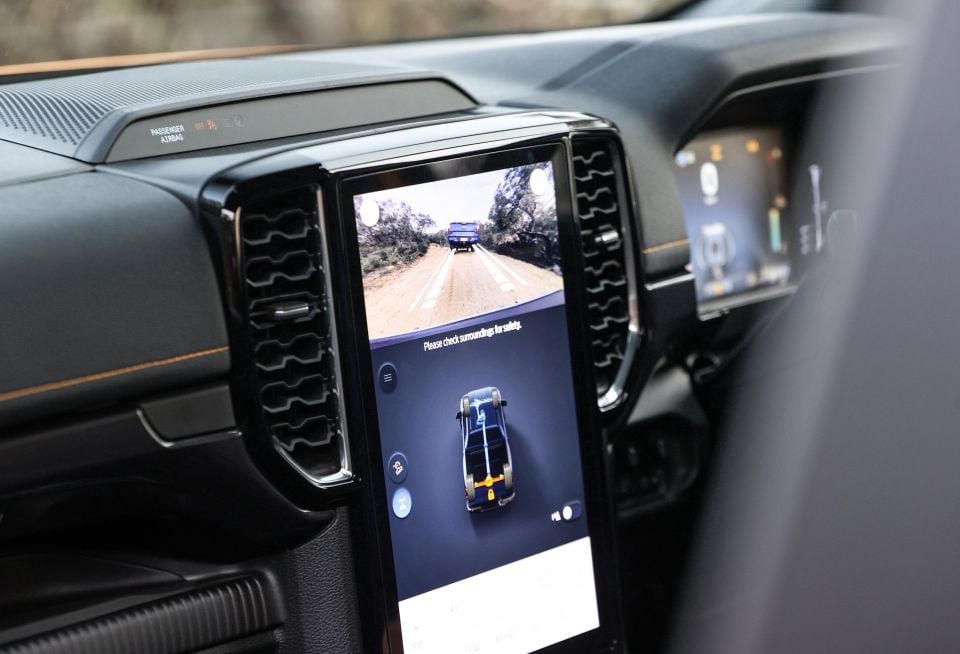
This pairs nicely with the available integrated brake controller (only standard Wildtrak) and the blind-spot monitor’s ability to change its width of views to suit long and wide trailers.
Don’t forget that ingenious app-based remote trailer light checker function listed above, either, for when you’re hitching up sans mates.
Sport and Wildtrak grades have a button that takes you to a specific off-road touchscreen menu, which houses driveline and diff lock indications, the hill-descent control, steering angle, pitch/roll monitors, and if fitted a forward-view camera.
From a usability perspective, my one concern in these versions was a lack of clarity around how to switch on the rear diff locker if for whatever reason your touchscreen bugs out. But if you spin the rotary dial shifter to Mud/Rut mode, it automatically engages. That’s the failsafe.
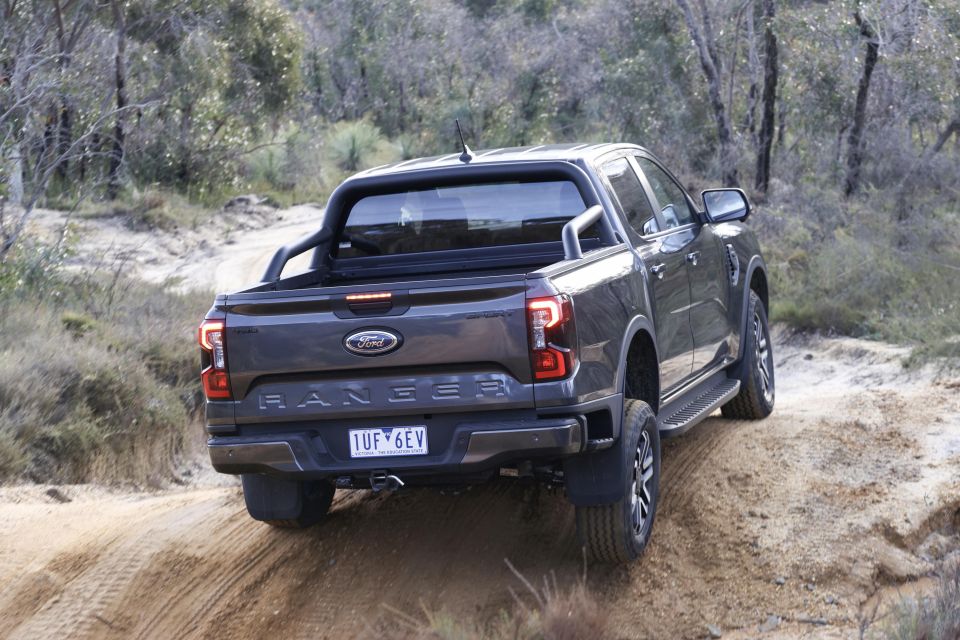

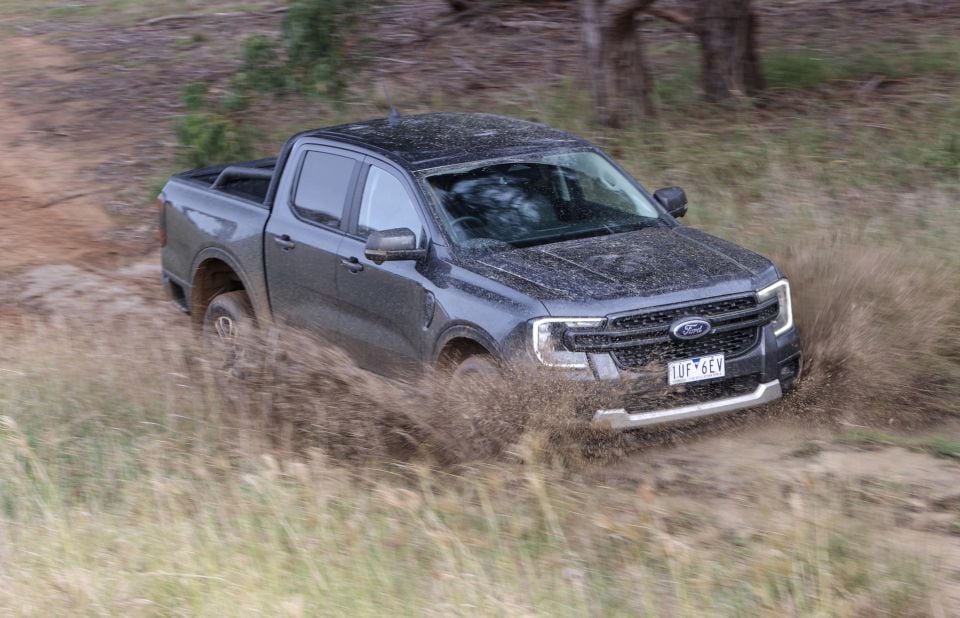
My off-roading comprised a slippery 50-degree downhill piece of mud-covered asphalt in drive and reverse, in which the hill descent control with steering wheel-based speed adjustments proved flawless and smooth, numerous rocks, muddy offset moguls and hills, and a dam nudging its 800mm wading capacity.
It simply walked over everything we threw at it, but more impressively, its modes and menus are all particularly user-friendly and will be far more accessible to someone who may not usually be a 4×4 enthusiast. It’s a no-fear and largely set-and-forget setup.
As far as payload is concerned, The Ranger Sport can carry 934kg, making it the worst of the range outside the Raptor. The XLT can handle 949kg and the Wildtrak 951kg. The V6 Sport has a GCM of 6400kg against a GVM of 3280kg.
MORE: 2022 Ford Ranger fuel economy revealed MORE: 2022 Ford Ranger: Every model’s payload, GVM, and GCM
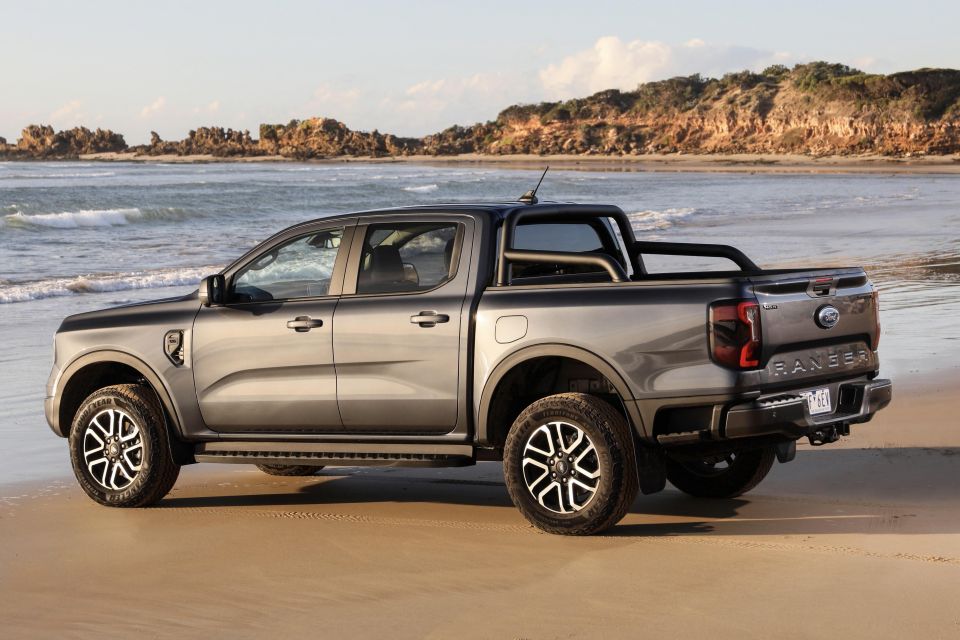
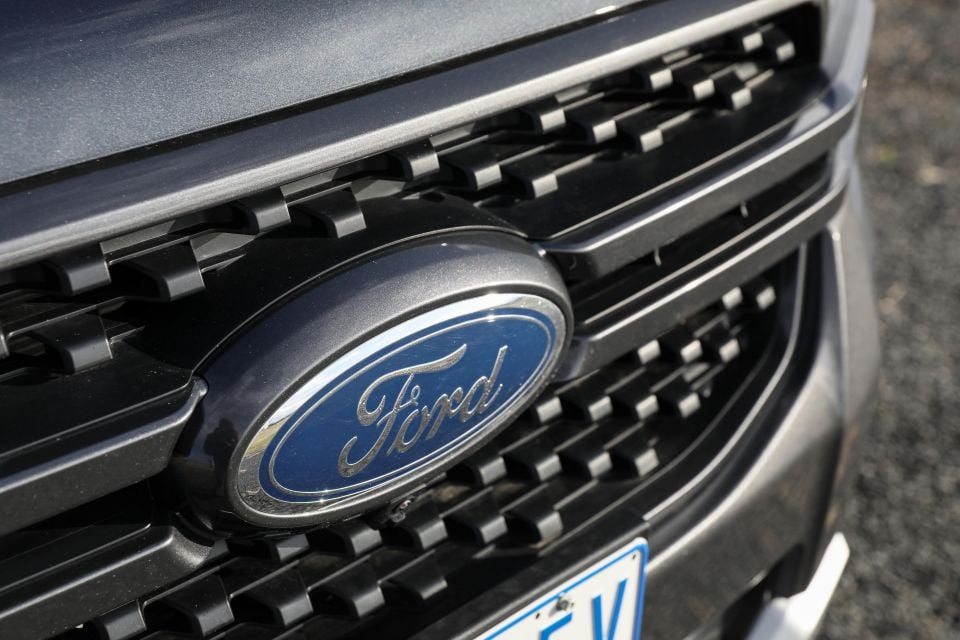

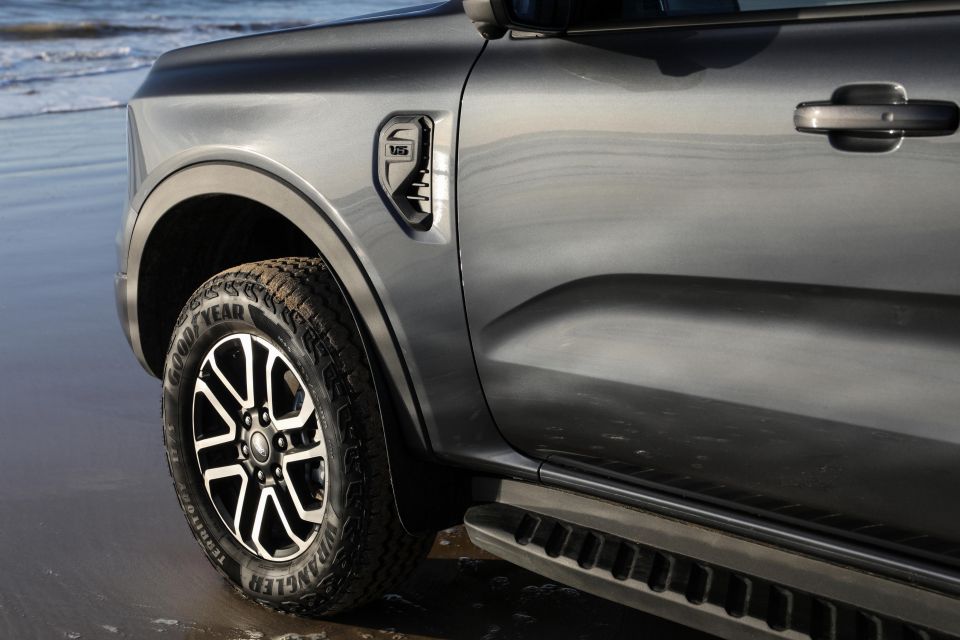
The Sport sits between the XLT and Wildtrak, so it makes sense to list all three grades to see the differences. As you’ll see, Ford has made the $3500 jump into the Wildtrak as tempting as possible.
Ranger XLT features include:
Ranger Sport adds:
Ranger Wildtrak adds:
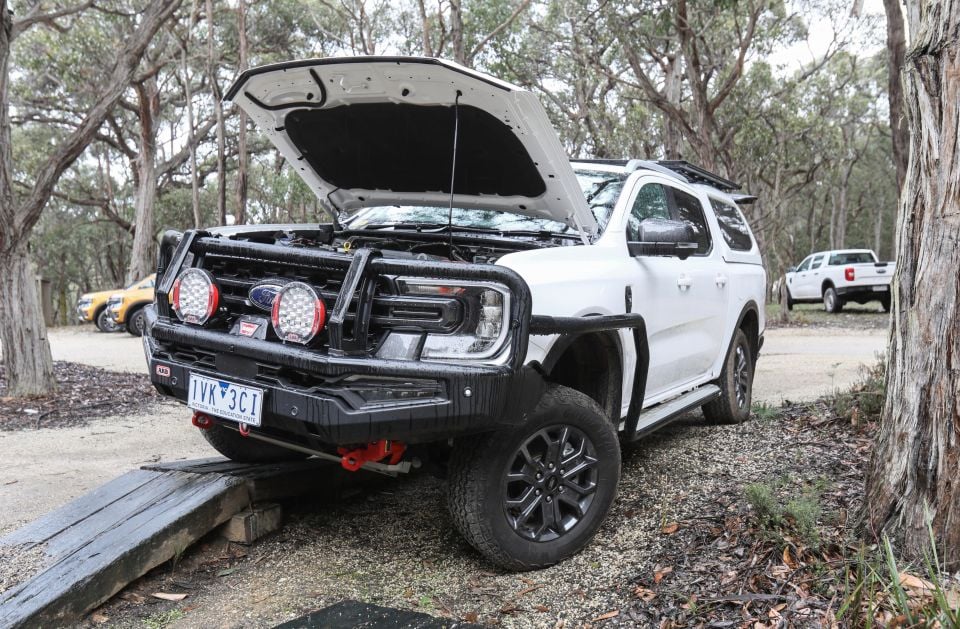
Options
It’s also worth mentioning here that Ford Australia is selling ARB accessories in its dealers, making it simpler for customers to access aftermarket add-ons. The range and pricing of these extras can be found here. I think this is a particularly clever move from Ford.
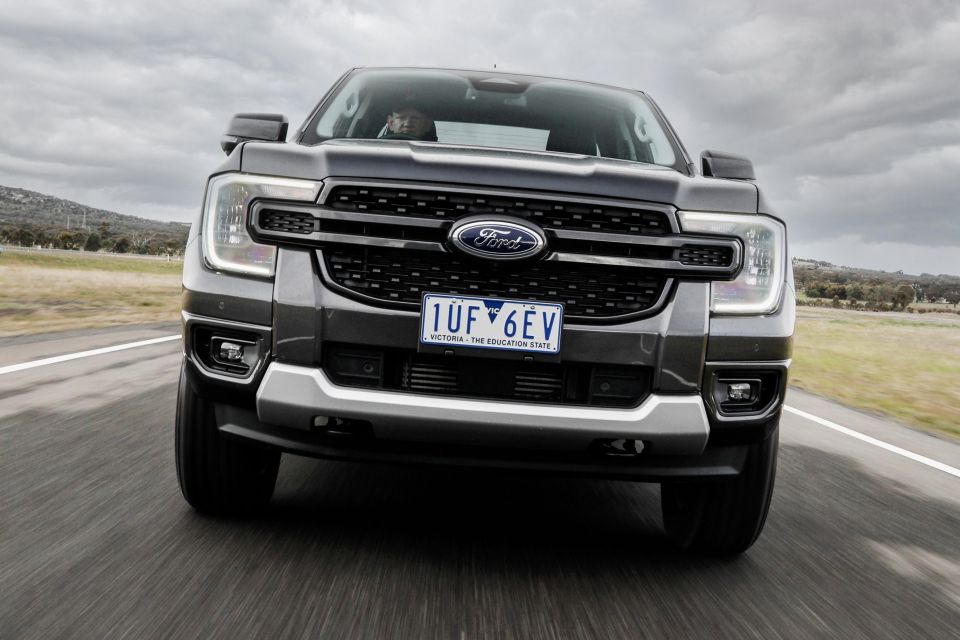
We’re awaiting ANCAP test results.
Safety features fitted include:
Even the base cars are impressively equipped with the latest drive-assist features, making them all the more family friendly.
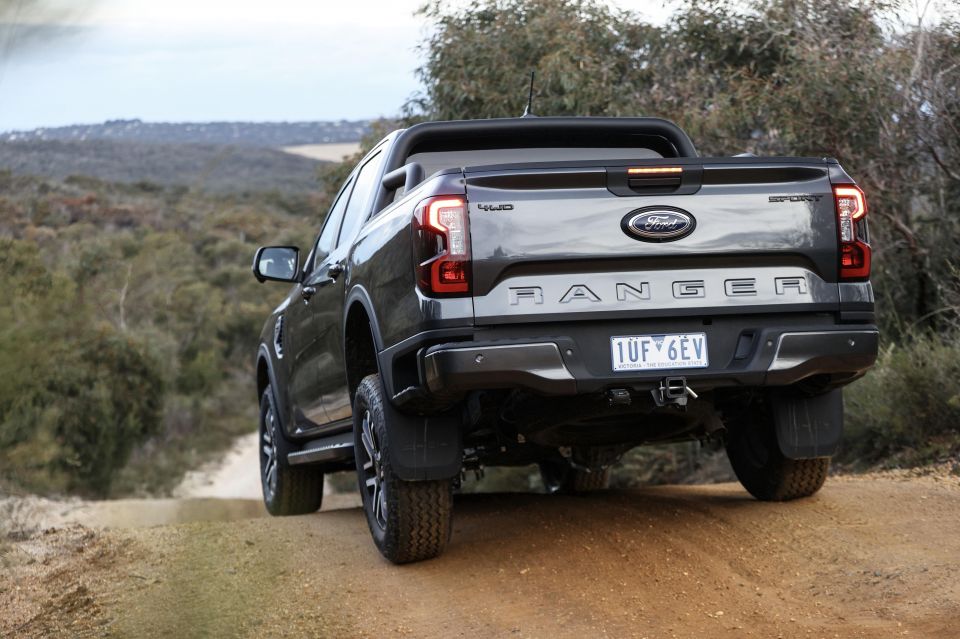
Ford provides a five-year, unlimited-kilometre warranty.
Service intervals are annual or 15,000km, whichever comes first, and the first four visits are capped at $329 apiece.
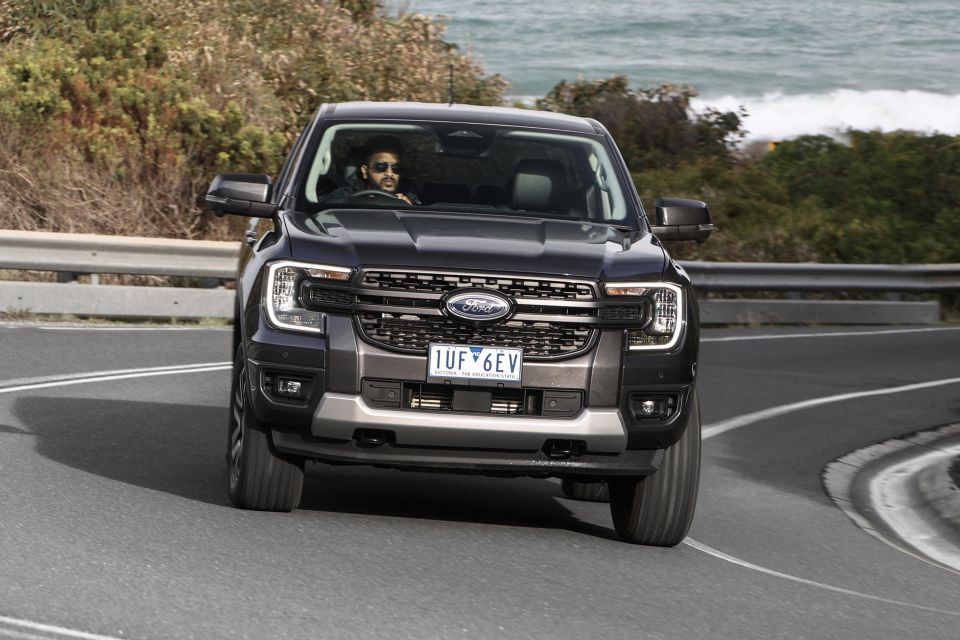
While the Ford Ranger Wildtrak and Raptor grades are the hero models, the Sport builds on the big-volume XLT and adds some stylistic enhancements and a few more features.
In V6 guise it’s a very impressive new-generation model, and in myriad ways is the clubhouse leader as far as the mainstream dual-cab ute market is concerned.
Click an image to view the full gallery.
Where expert car reviews meet expert car buying – CarExpert gives you trusted advice, personalised service and real savings on your next new car.


Ben Zachariah
2 Days Ago


Matt Campbell
2 Days Ago


Derek Fung
6 Days Ago


Damion Smy
9 Days Ago


Ben Zachariah
10 Days Ago


James Wong
16 Days Ago